Tokyo’s New Toyosu Fish Market – Is It Worth a Visit?
Write a response
October 11th, 2018, brought massive changes to the Tokyo fish market scene. After over 80 years, the famous Tsukiji fish market closed. In its place a new market in Toyosu opened. Subsequently, taking taking over the crown from Tsukiji as the biggest fish market in the world.
But what exactly has moved to Toyosu? And is there anything still worth visiting at the old Tsukiji location? We’ve got all you need to know about these major changes to Tokyo’s fish markets right here. But first things first; your guide to Tokyo’s new Toyosu fish market.

Toyosu Fish Market’s address is 6 Chome-5-1 Toyosu, Kōtō-ku, Tōkyō-to 135-0061, Japan. Located right next to the Shijo-Mae Station on Tokyo’s driver-less Yurikamome subway line. In fact, the market and Shijo-Mae station are directly connected, so once you’re at the station, you’re practically at the market.
The Toyosu Market floor hours are 4:30 AM-5:00 PM and admission is completely free! Just don’t try to visit on Sundays or national holidays — on these days the market is closed.
Yes! If you’re interested in seeing the tuna auction, don’t worry. They moved it to Toyosu, together with the rest of the wholesale fish market. You’ll find the auction at Toyosu’s fisheries wholesale building (block 7). However, you’ll have to be early. It starts at 4:30 AM! The Japanese treat tuna like premium beef, so the best tuna at this auction can fetch millions of yen!
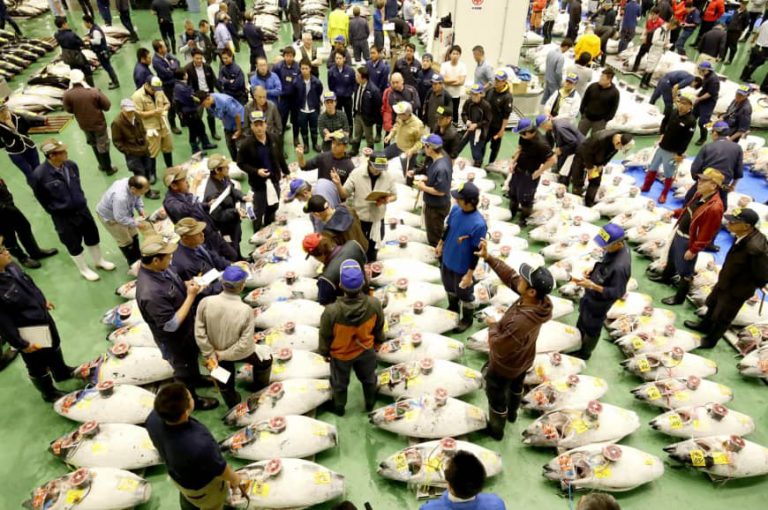
Source: Japan Times
The Toyosu auction experience is different from the old Tsukiji auction feel; it’s more modern and it’s a bit less liberal. That is to say, you can’t look at the tuna from up close. On the other hand, you won’t have to get a reservation ticket to visit the Toyosu auction. As long as you show up very early, you’ll secure a good view of the action.
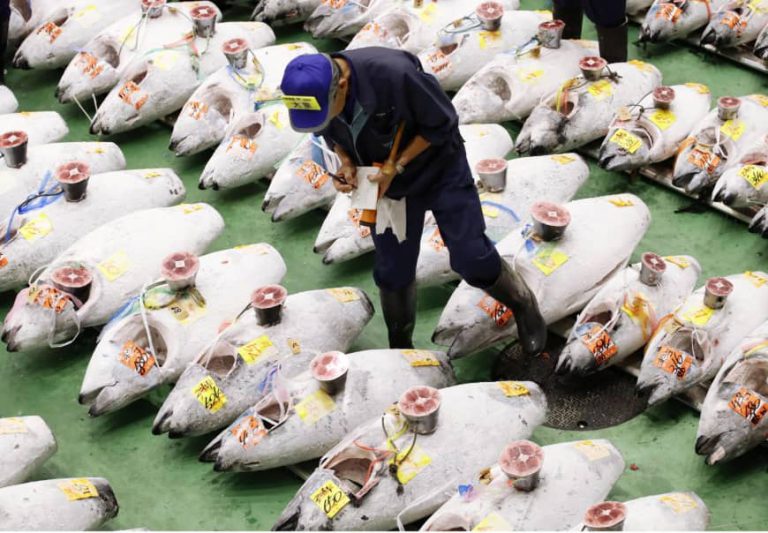
Source: Japan Times
On the second floor (upper observation deck) of the fisheries wholesale building, you’ll find several observation windows through which you can watch the auction unfold. Additionally, you’ll also find displays with explanations about the auction process. On the same floor there’s a life-size model of the largest bluefin tuna ever sold at the Tsukiji Market.
This setup has an upside; it’s much safer and cleaner than it was at Tsukiji and there’s room for more people. Still, it’s unsure if it outweighs the big downside; you won’t be able to hear the actual auction. Consequently, feeling less like you’re a part of the it.
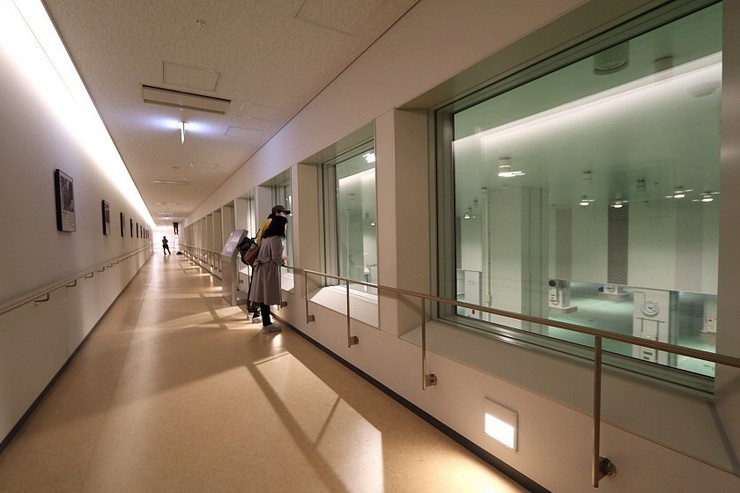
Source: Japan-Guide.com
To get a more interactive experience, you’ll have to get to the lower auction observations area on the first floor. There, you can listen to the hustle and bustle as the fish get sold. Likely, you can even smell the tuna and feel the cold auction floor temperatures (so you’ll want to bring a coat). The only thing standing between you and the auction hall will be a giant piece of glass.
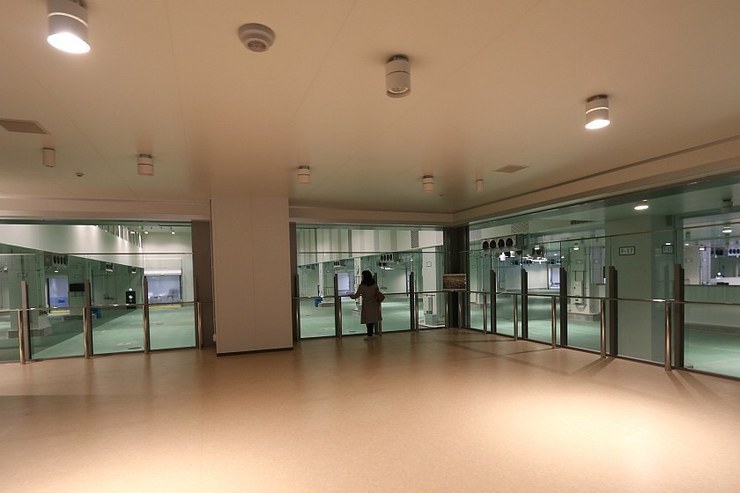
Source: Japan-Guide.com
Whichever viewing spot you choose, you’ll notice the green floors where rows and rows of tuna are lined up, waiting to be sold. Why green? Simply because it’s easier for buyers to pick out the best fish. The red meat beautifully pops on the green background!
What else is there to see at Toyosu?
Besides the tuna auction, you can also watch other seafood and produce auctions. These auctions have their own floors (separate from the tuna auction). Like the tuna auction, you can view them from observation decks — safe and clean. You’ll find the seafood auction in the fisheries wholesale building and the produce auction in the fruit and vegetable market building.
Unfortunately, you can’t visit the main Toyosu wholesale market anymore — they don’t even open it to the public after a certain time. Although you can view the market from observation areas, the awnings make most of the action hard to see, as illustrated in the photo bel
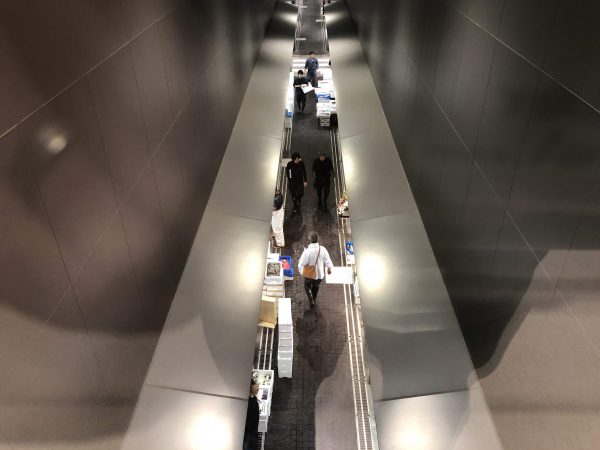
Source: Japan Wonder Travel
Instead, there’s a small market that visitors can peruse. It’s called the Uogashi Yokocho market, and it’s on the fourth floor of the fish intermediate wholesale building (different from the main fisheries wholesale building). You’ll find non-perishable foods, tea, sake, knives, ceramics, souvenirs, and many other goods.
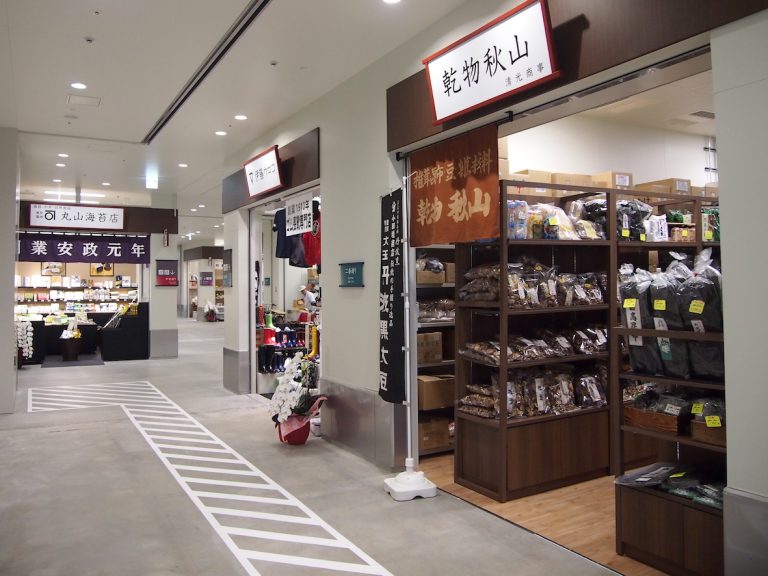
Source: Timeout.com
Also, on the fifth floor of the fish intermediate wholesale building, there’s a rooftop promenade and garden with amazing views of Tokyo. Look for Tokyo Tower and Rainbow Bridge — and rumor has it, on a clear day you might even see Mt. Fuji.
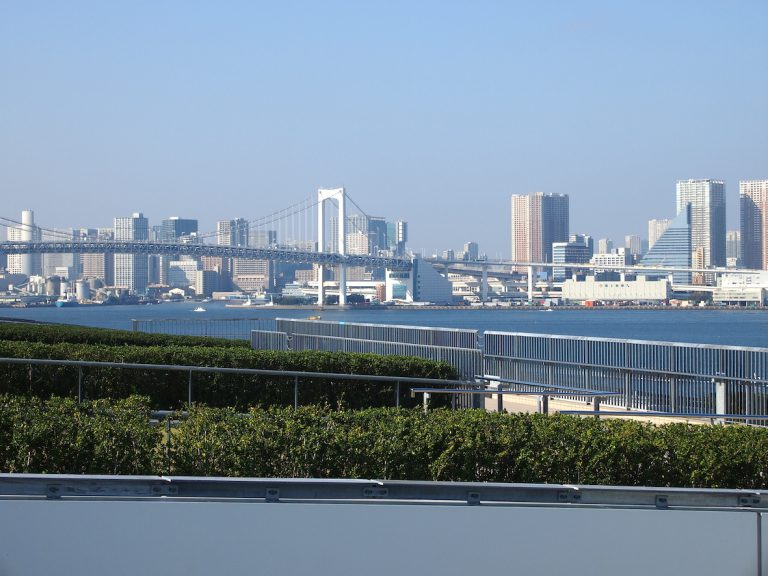
Source: Timeout.com
And of course, there are the scrumptious restaurants, many of which moved from Tsukiji. We’ll cover the restaurants next.
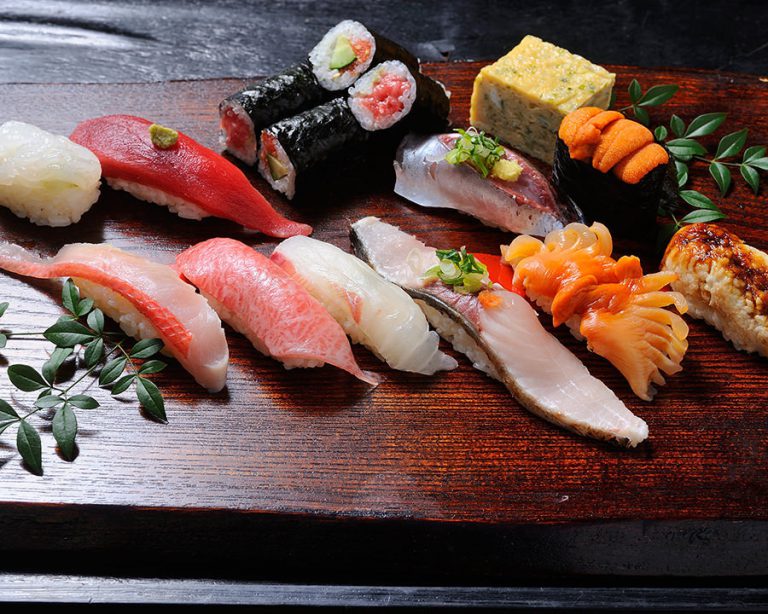
Source: Gurunavi
Sushi restaurants, where you can eat the freshest fish, are the best and most popular restaurants at Toyosu. However, there’s a downside; to grab a bit at Sushi Dai or Daiwa Sushi, the two most famous restaurants, you’ll usually have to stand in line for 3 to 4 hours. The lines are shorter at other sushi restaurants, but it’ll be worth is, as you know you’ll have the freshest fish and a Japanese cook preparing it for you — you can’t go wrong!
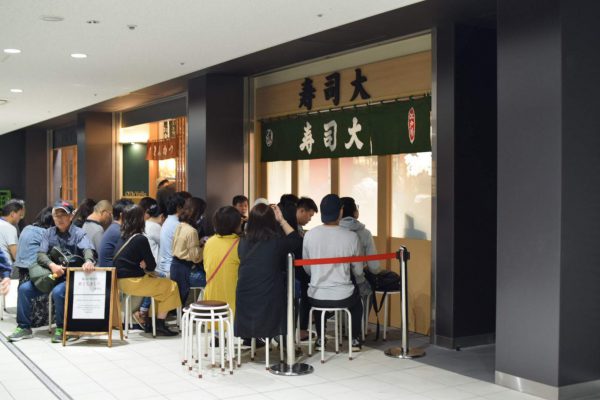
Source: Japan Wonder Travel
Next to the famous sushi, you’ll also find kaisendon (raw fish over rice, pictured below) and unagi (the Japanese delicacy of eel) at the seafood restaurants. In the mood for something other than seafood? Your options include pork cutlets, tender beef, spicy curry, traditional ramen, and more.
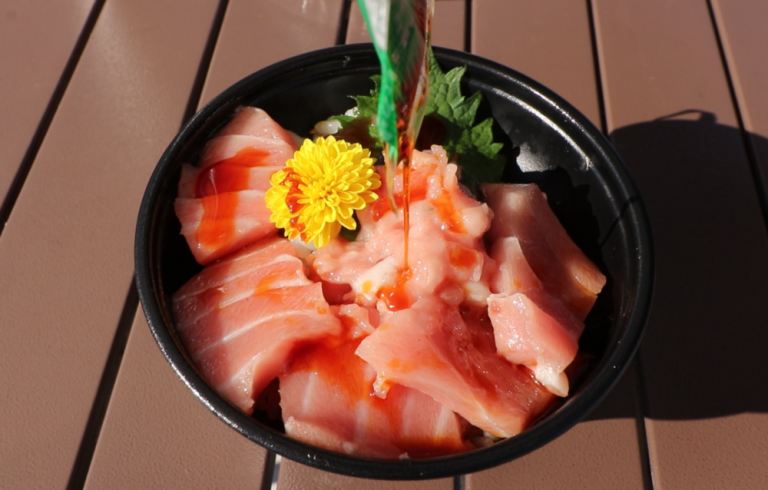
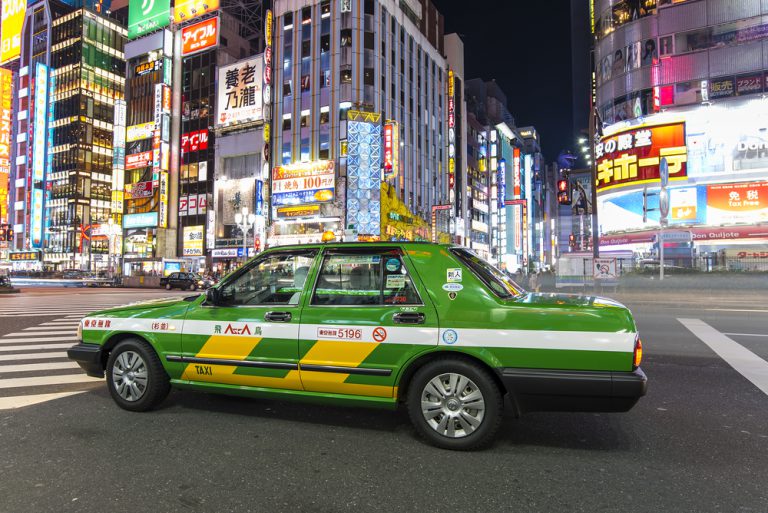
Source: Fast Japan
It’ll help if you’re a morning person! For your best Toyosu experience, you should get to the market before sunrise, when it’s most active. In order to get there in time, it’s advisable to find a place to stay in Toyosu (or Odaiba).
From Toyosu Station, the Toyosu Fish Market is a 3-minute ride on the Yurikamome line. From Odaiba-Kaihinkoen Station, a 15-minute ride on the same line. However, the first train from Toyosu Station to Shijo-Mae Station only leaves at 5:15 AM and arrives at 5:18 AM. And the first train out of Odaiba-Kaihinkoen leaves later than that. In any case, you’d miss the tuna auction, which starts at 4:30 AM. To secure the best viewing spot, you’ll need to catch a taxi before that time. The market is a 10-minute taxi ride from Odaiba, and less than an 8-minute ride from central Toyosu. Calculated your time wisely!
Besides Shijo-Mae Station, there’s unfortunately not much to do near the Toyosu Fish Market at this moment. However, there are many plans for the future; a hotel, a spa, shops, and other attractions next to the Toyosu Fish Market. Most of the project won’t be finished until 2023. But times flies nowadays.
Your best temporary alternative is to hop back on the Yurikamome line and ride it to Odaiba. You can cover Toyosu and have plenty of time to visit Odaiba on the same day.,
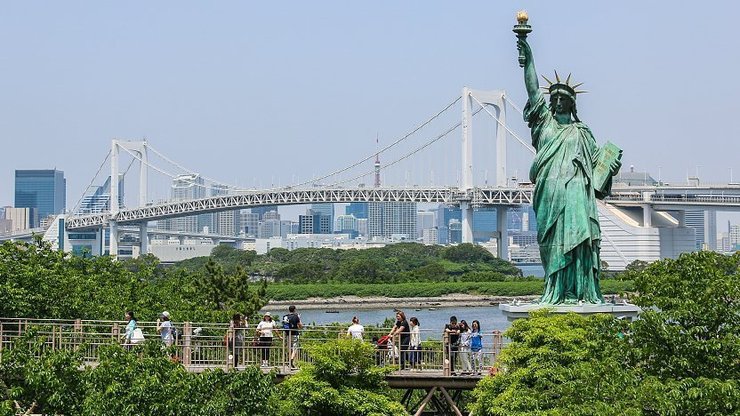
Source: Japan-Guide.com
You might wonder what’s up with Tsukiji now and if it’s also still a viable option to visit. The famous fish market is closed, but it’s far from empty.
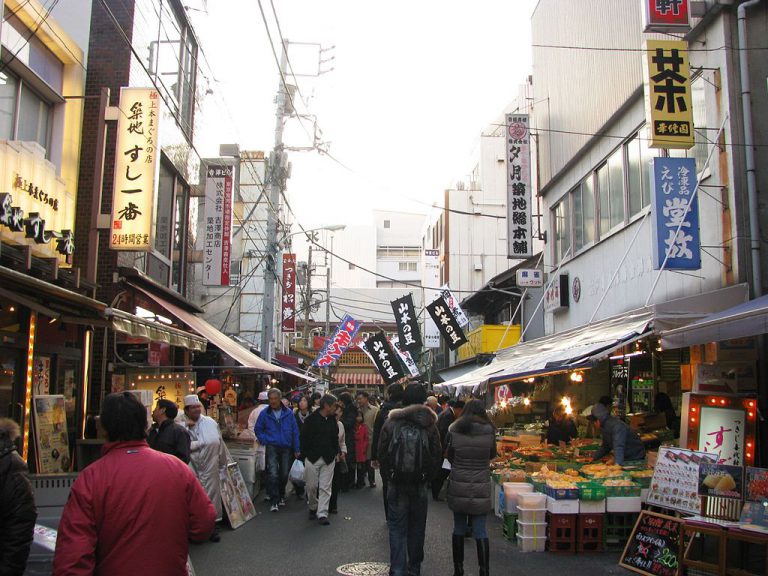
Source: Aimaimyi (CC BY-SA 3.0)
Fortunately, not everything at Tsukiji has moved to Toyosu. The inner markets with fish, vegetables and fruits, as well as some of the restaurants, moved. However, the outer market is still at Tsukiji. There are still loads of food vendors and tourist-oriented shops waiting for a visit from you. And even though some of the outer Tsukiji shops have closed, new ones are moving in! Tsukiji still retains its historic charm, cultural significance, and culinary influence, even with the inner market gone.
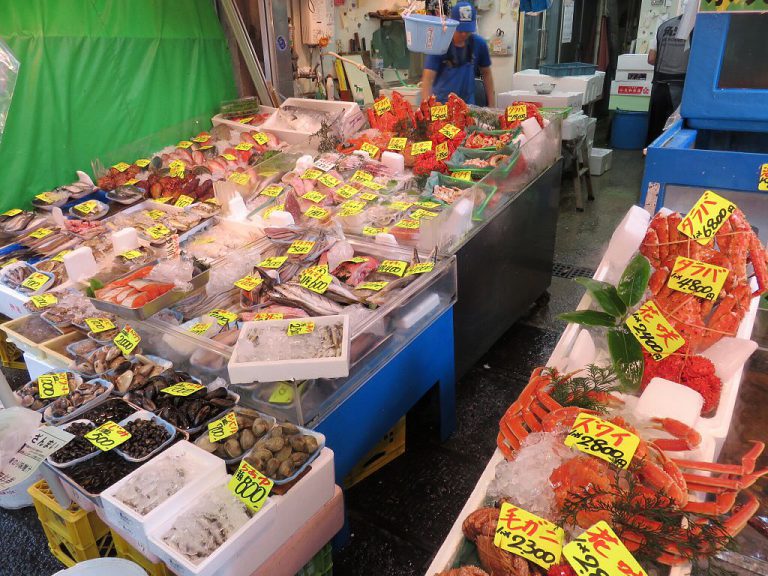
Source: Aw1805 (CC BY-SA 3.0)
You’ll find Tsukiji Outer Market at 4 Chome-16-2 Tsukiji, Chūō-ku, Tōkyō-to 104-0045, Japan. If you’re going to ride the subway, you’ll need to get off at Tsukiji Shijo Station (Oedo Subway Line) or Tsukiji Station (Hibiya Subway Line). From both stations, the market is just a short walk away.
Tsukiji Outer Market is closed on Sundays and holidays and many stalls close on Wednesday as well. Each shop, restaurant, and street food vendor has their own hours, but most are open 5:00 AM-2:00 PM.
There’s still plenty of authentic Japanese food at Tsukiji to satisfy every taste — especially if you’re a seafood fan! Likewise if you a general street food fan. Tsukiji still has plenty of street food shops in the outer market, serving up Tokyo favorites. Just be prepared to wait a while for the most popular street eats. And make sure to seek out the coveted free samples!
Some of the best Tsukiji street foods are:
Tuna: After hearing about how prized tuna is in Japan and watching the tuna auction at Toyosu, you’ll want to pick up tuna for yourself. On the Tsukiji streets, it’s best served raw in bowls, or grilled on skewers. If you’re lucky, you’ll find some melt-in-your-mouth tuna belly!

Source: Tokyo Zebra
Giant Oysters: When we say they’re giant, we mean it! These oysters are as big as, or bigger than, your hand. And you’ll have to be brave, as they’re usually served raw.
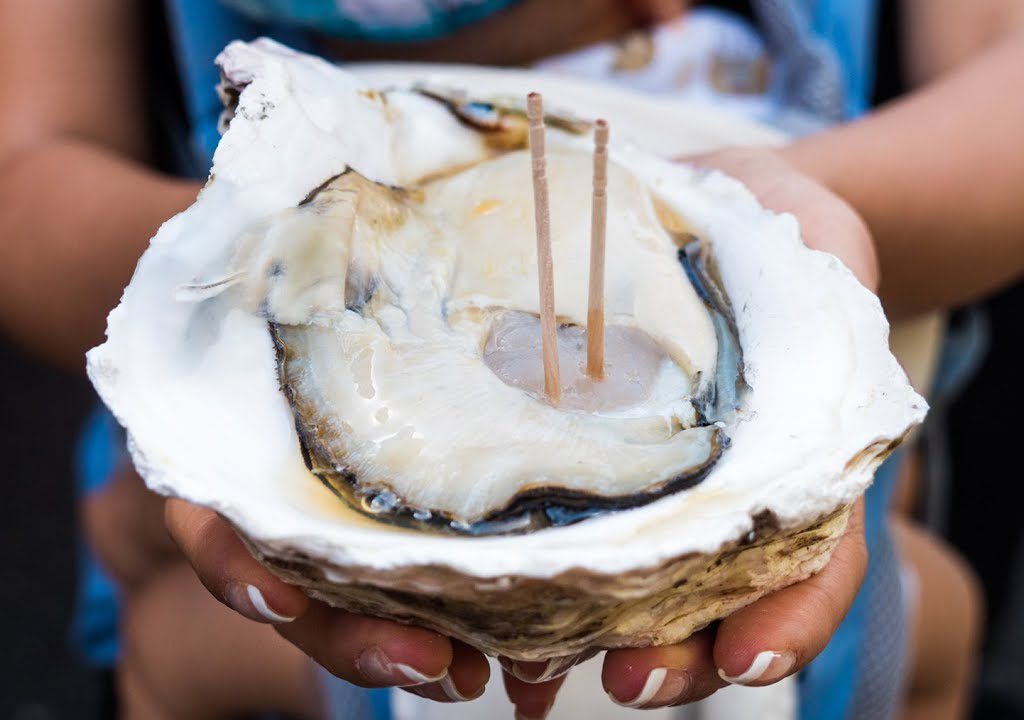
Source: Mark Wiens/Youtube
Tamagoyaki: Tamagoyaki are Japanese skewered sweet omelets. At one stall, you’ll only have to pay 100 yen for the iconic eggy goodness. These “rolled” omelets are the perfect way to start your day, preferably bright and early, before the lines get long!
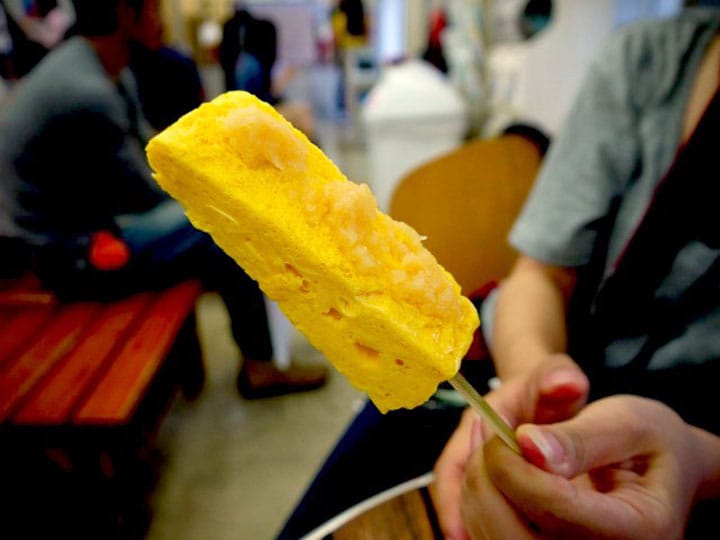
Source: Matcha
Eel Skewers: Usually, eel (unagi) is expensive because it’s so highly regarded in Japan. But if you want to try a little eel for a reasonable price (and still have plenty of room for other street eats), one stall called Nishin Tasuke serves tender little skewers of eel.
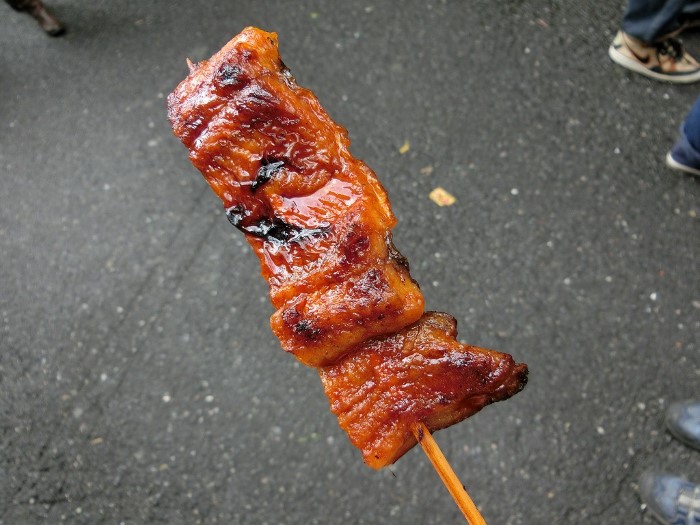
Source: Japan Info
Matsuzaka Beef: The locals have a secret; tender, juicy Matsuzaka beef is just as good as the world famous Wagyu! So, go find yourself some street Matsuzaka. You might find a delicious Menchi Katsu or Matsuzaka meatball covered in bread crums.
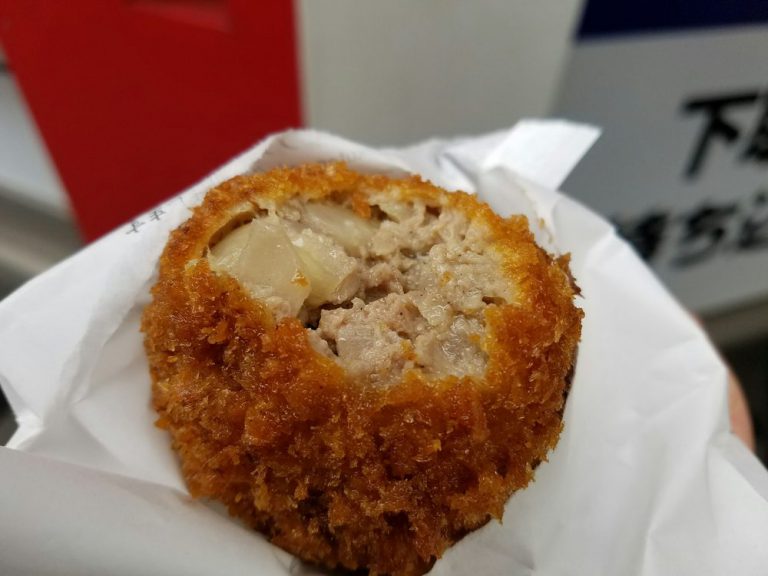
Source: Reddit
Fish Cakes/Crab Cakes: These can be spotted at several stalls. The most popular versions are the one that are coated in sweet corn.
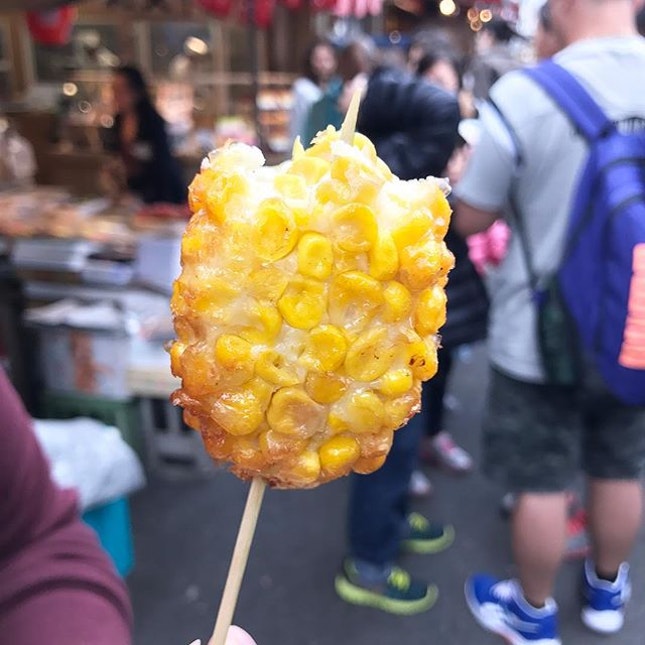
Source: Zhihui Lim/Burpple
Uni: Uni is sea urchin, a Japanese delicacy with elaborate salty, bitter and fishy flavors, harvested out of its threatening spiny shell. Try it on its own (straight out of the shell), or seek out one of the best street food bites at the market—the black steamed buns filled with warm uni cream!
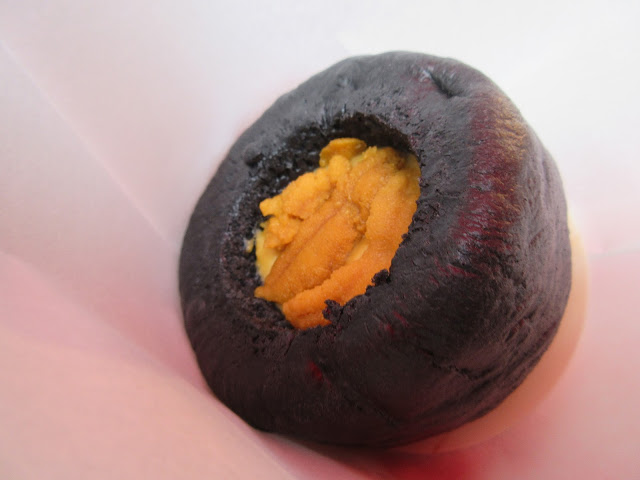
Source: No Shame Adventures
Several restaurants have stayed open at Tsukiji. Are you a sushi enthusiast? It’s much easier to grab sushi at Tsukiji than at Toyosu. Even though some Tsukiji restaurants also have wait times of several hours, any sushi you find will be fresh and authentic. In fact, any restaurant seafood you sample will be high-quality. Especially since much of it comes right from the Toyosu auctions. Enjoy! And definitely don’t limit yourself to just the sushi!
There are still some market stalls open, too. They continuously serve produce, delicacies like dried squid, and much more to satisfy your culinary needs. Also, you can still look at tuna, shrimp, crab, clams, and other fresh seafood at Tsukiji. Some of it you can sample and everything you can buy directly from fish vendors.

Source: Timeout.com
You can even book cooking classes with tours of Tsukiji Outer Market, so you can cook authentic Japanese dishes with local fish right after you’ve perused the high-quality local seafood! You’ll see how professional chefs choose the best fish and other ingredients — pick up tips to use in your own cooking!
Tsukiji Uogashi (“Tsukiji Fish Bank”) is a new, smaller inside market complex meant to help fill in the gaps caused by the move to Toyosu. Several of the fresh fish, fruit, and vegetable vendors who moved to Toyosu opened up branch locations at Tsukiji Uogashi to maintain their presence at Tsukiji. Plus, you’ll find even more sushi and seafood restaurants at Tsukiji Uogashi for your fresh fish fix!
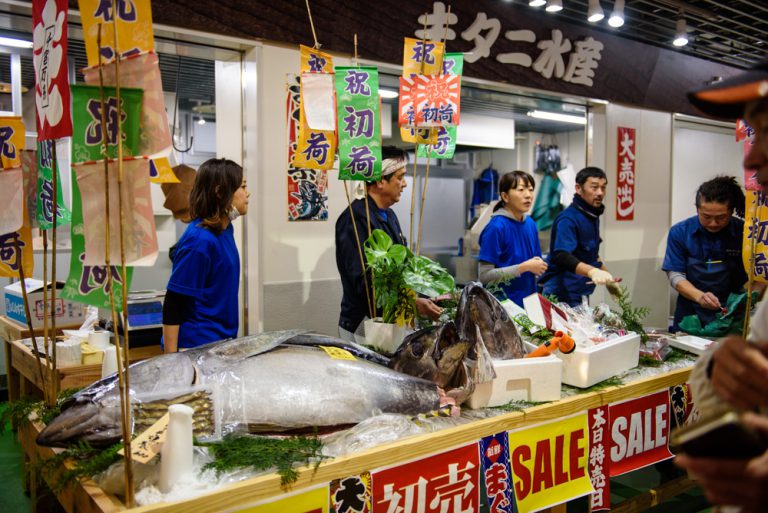
Source: Timeout.com
The public can access Tsukiji Uogashi from 9:00 AM to 3:00 PM, so it’s the perfect place to visit after strolling around the Tsukiji Outer Market. Like the other fish markets, it’s closed on Sundays and holidays. It’s also closed on Wednesdays.
Tsukiji Uogashi is located at 6 Chome-27-1 Tsukiji, Chūō-ku, Tōkyō-to 104-0045, Japan. It’s only a minute’s walk away from Tsukiji Outer Market!
There are three options within a 15-minute walk; Hama Rikyu Gardens, the Ginza shopping district, and the Hongan-ji Buddhist temple.
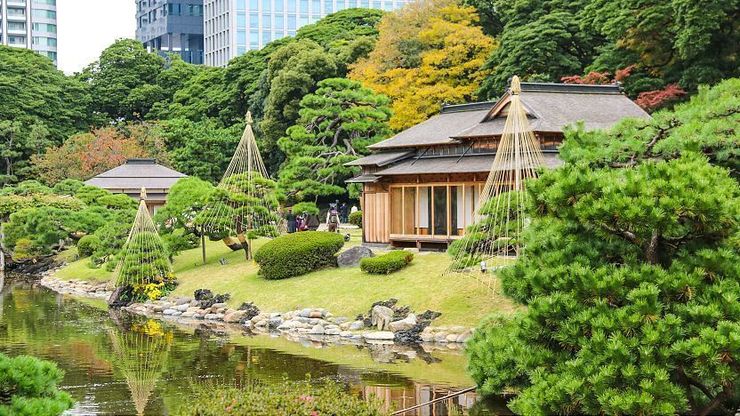
Source: Japan-Guide.com
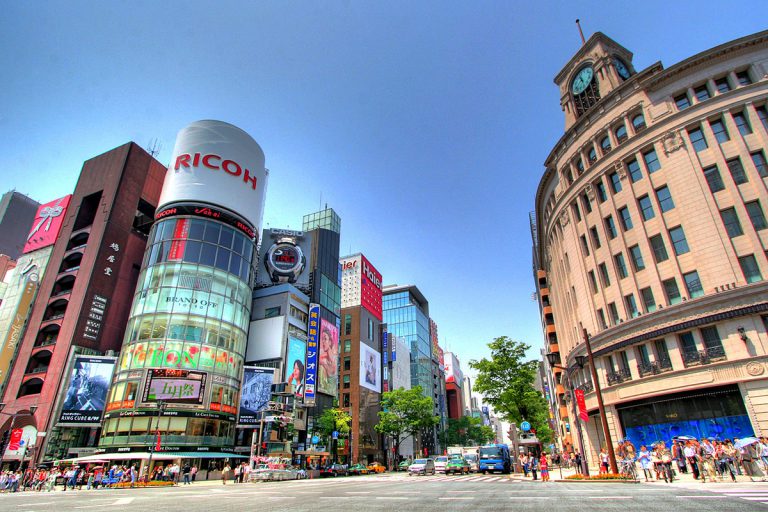
Source: Kabacchi/Flickr
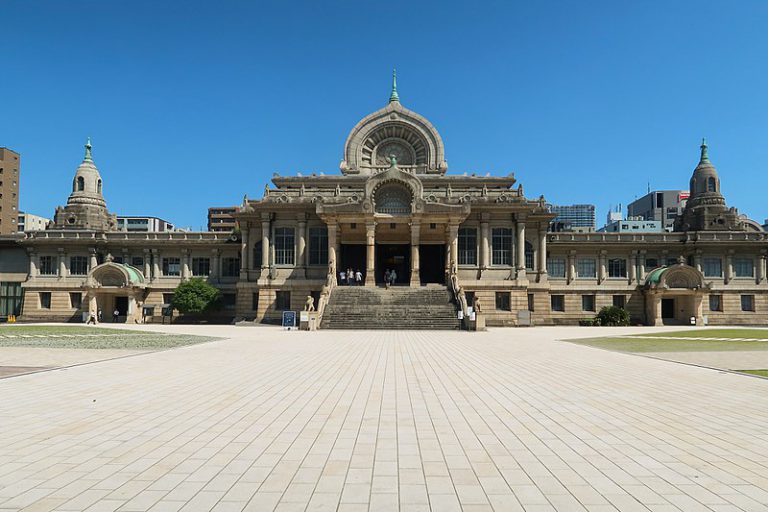
Tsukiji’s still the better choice for foodies who want to sample a variety of dishes, both in restaurants and on the street. After all, there’s virtually no street food at Toyosu. Tsukiji’s also better for looking at and buying fresh fish for cooking, as there’s no way to buy fresh fish if you’re just visiting Toyosu. Plus, there’s more to do around Tsukiji. But if your main desire is to see an iconic seafood auction, then go with Toyosu, as Tsukiji no longer hosts auctions.
However, plan you time right and you won’t have to choose between Toyosu and Tsukiji. Tsukiji Market is about a 10-minute taxi ride from central Toyosu, so you can easily visit both markets on your Tokyo trip. Remember; both markets are at their best early in the morning, so split these visits between two different days.
If you want to see the best of both we recommend you to Toyosu & Tsukiji Fish Market Tour with Sake Tasting.